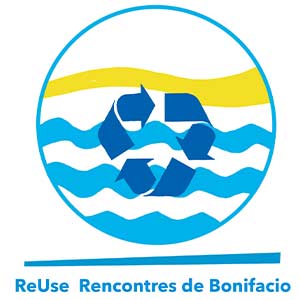Declaration of Bonifacio
Recalling:
The United Nations Sustainable Development Goals and more specifically those dedicated to "safe drinking water and sanitation - SDG 6", "aquatic life - SDG 14", "zero hunger - SDG 2", "health and well-being - SDG 3", "reducing inequality - SDG 10", "sustainable cities and communities - SDG 11", "combating climate change - SDG 13", "partnerships for the achievement of global goals - SDG 17";
The «Convention for the Protection of the Marine Environment and the Coastal Region of the Mediterranean », the legal framework of the Mediterranean Action Plan, developed within the framework of the Regional Seas Programme of the United Nations Environment Programme;
The implementation of the Green Pact by the European Commission aiming to achieve “Zero pollution by 2050” ;
The 3 strategic objectives of the Union for the Mediterranean for Water, Environment and Blue economy: i) Promote integrated water resources management and ensure access to affordable water resources and services. Ii) Protect the Mediterranean Sea and its environment by contributing to the efforts to de-pollute and prevent pollution in the region and iii) Promote the green and blue economy”;
The Objective 13 of the Action Plan for an exemplary Mediterranean in 2030 (PAMEx) aiming to: "Adopt firm measures, including adequate funding, to establish adequate urban sewerage networks, wastewater treatment plants and waste management systems to avoid pollution from wastewater discharges and runoff and inputs of waste, including plastic waste and microplastics, from waterways."
Considering:
The situation of water stress which is worsening in the Mediterranean, where hundreds of millions of people are already experiencing difficulties in accessing water;
The foreseeable demographic increase: from 281 million in 1970 to 419 million in 2000 and 472 million in 2010, the population is expected to reach 572 million in 2030.
The concentration of the population in urban areas: more than a third of the population lives in coastal municipalities representing less than 12% of the surface area of Mediterranean countries. The population of coastal regions has increased from about 100 million in 1980 to 150 million in 2005. It should reach 200 million in 2030;
The fragility of Mediterranean ecosystems, remarkable for their beauty and the rarity of the species they shelter: 17,000 marine species, i.e. between 4 and 18% of the known marine species in the world for about 1% of the global volume of the ocean. This almost closed sea records the highest rate of endemism on a global scale: 20 to 30% of species are endemic ;
Recognizing:
The eminent role of Cities and Regions, alongside States, in the choice of wastewater treatment facilities and reuse;
The duty to preserve marine ecosystems, the common heritage of the citizens living in the regions bordering the Mediterranean Sea;
The need to guarantee access to fresh water for the various uses while minimizing withdrawals from the resource;
That the reuse of treated wastewater in coastal areas is a safe and effective way of limiting pressure on the resource and contributing to these objectives.
Appeal:
- 1
For the generalization of the practice of reuse of treated wastewater in coastal areas;
- 2
Ensuring an equitable distribution of this resource.


